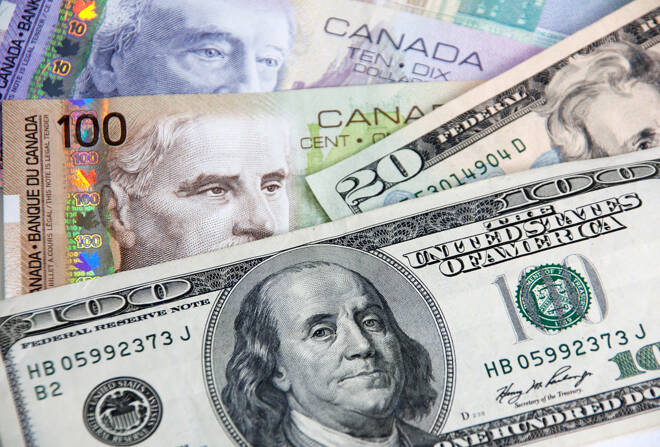Advertisement
Advertisement
USD/CAD: Loonie Remains Range-Bound, Could Turn Volatile After U.S. Jobs Report
By:
The Canadian dollar traded marginally lower but remained range-bound in lacklustre trade against its U.S. counterpart on Wednesday as investors await the outcome of the U.S. nonfarm payrolls report later this week, which could determine the direction of the Fed's monetary policy.
In this article:
The Canadian dollar traded marginally lower but remained range-bound in lacklustre trade against its U.S. counterpart on Wednesday as investors await the outcome of the U.S. nonfarm payrolls report later this week, which could determine the direction of the Fed’s monetary policy.
The USD/CAD pair rose to 1.2637 today, up from Tuesday’s close of 1.2614. The Canadian dollar lost about 1% in July and has further dropped over 1.2% last month.
The U.S. Job figures are due on Friday, which could provide insight into the timing of the Federal Reserve’s asset purchase tapering. Traders remain cautious as better-than-expected data would lift the greenback.
Next week, the Bank of Canada will also announce its interest rate decision.
“Our base case remains for another tapering in October, with net-zero purchases by year-end and BoC to commence rate hikes in H2 2022 but potentially earlier if labour market slack is absorbed sooner. We remain bullish on oil (a key export by Canada) with a base case for Brent to trade in a $75-80 range in 2H’21. This leaves the overall backdrop well supportive for CAD,” noted analysts at Citi.
“However, the near-term tactical outlook for CAD remains biased towards further weakness vs USD. USDCAD closes the week just under a triple resistance range at 1.2647-53, which consists of a long-term channel top converging with the double highs from March 30th and April 2021. Above here lies the July 2021 high at 1.2807.”
The dollar index, which measures the value of the dollar against six foreign currencies, was trading 0.23% lower at 92.415. Dollar broadly weakened after Federal Reserve Chair Jerome Powell gave no indication of a tapering in a much-anticipated speech on Friday.
These comments from Powell are contrary to what other policymakers have said, making next month meeting very interesting for investors.
However, it is highly likely that the world’s dominant reserve currency, the USD, will rise over the coming year, largely due to the expectation of two rate hikes by the Fed in 2023. With the dollar strengthening and a possibility that the Federal Reserve will raise interest rates earlier than expected, the USD/CAD pair may experience a rise.
Canada is the world’s fourth-largest exporter of oil, which edge lower as the US pressuring OPEC to pump more oil. U.S. West Texas Intermediate (WTI) crude futures were trading 1.26% lower at $67.62 a barrel. Lower oil prices lead to lower U.S. dollar earnings for Canadian exporters, resulting in a decreased value of the loonie.
On the other hand, Global demand for crude oils is declining due to recent restrictions over the Covid-19 Delta variant and a lack of buyers. The slowing Chinese economy dampened sentiment and have knocked investors off balance.
As a major exporter of commodities, including oil, Canada’s dollar tends to be sensitive to the outlook for global economic growth.
About the Author
Vivek Kumarauthor
Vivek has over five years of experience in working for the financial market as a strategist and economist.
Did you find this article useful?
Latest news and analysis
Advertisement
